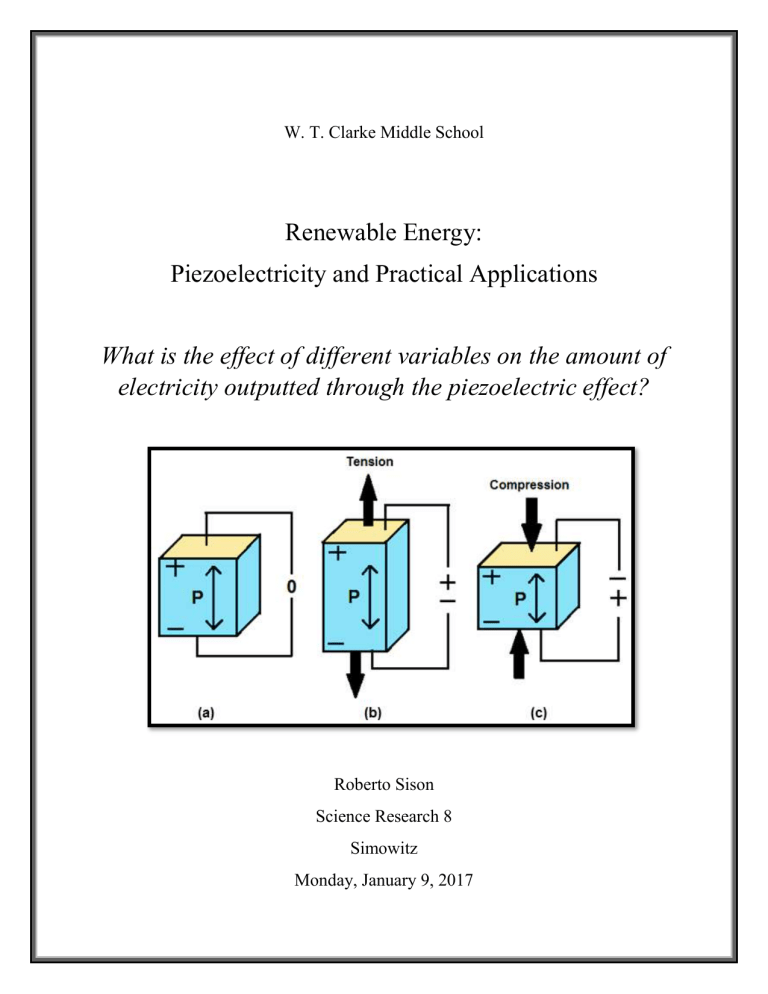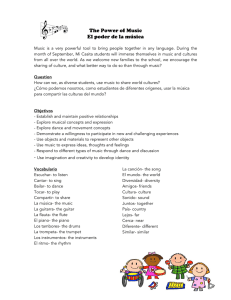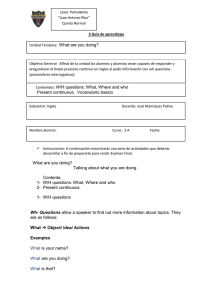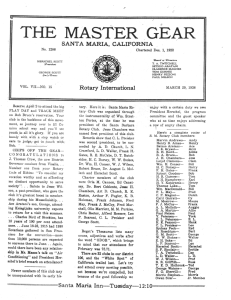
W. T. Clarke Middle School Renewable Energy: Piezoelectricity and Practical Applications What is the effect of different variables on the amount of electricity outputted through the piezoelectric effect? Roberto Sison Science Research 8 Simowitz Monday, January 9, 2017 Wind energy, hydroelectricity, solar power, geothermal energy, tidal energy. What do all of these types of energy have in common? All of them are renewable, natural sources of energy that humans harvest as a pollution-free alternative to fossil fuels. Exclusively harvesting energy created by the natural processes of Earth and the affecting celestial bodies is a step towards a greener and safer Earth. While the vast majority of media companies and corporations cover the divulgation of these sources of energy, one sits in the shadows silently and unheard of. Piezoelectricity, electricity generated through the means of mechanical stress on piezoelectric materials, is seemingly always left out and never to be heard of. The presence of piezoelectricity in media is subliminal when compared to the likes of other types of renewable energy. In recent years however, piezoelectricity has been rising in popularity with companies beginning to harvest and utilize piezoelectricity in dance floors to pacemakers to even ultrasound machines. More intensive research may lead to piezoelectricity becoming a larger part of everyday human activity as a contributing and renewable source of energy. As previously mentioned, certain clubs have been generating piezoelectricity from dance floors. Two of these aforementioned clubs are located in Rotterdam, the Netherlands and another in London, England. An article written by The New York Figure 1.1 (Trotter 2) Times in 2008 has revealed that Club Watt in Rotterdam, the Netherlands utilizes the piezoelectric effect created by the dancing of people on the dance floor. All movement, whether it may be a step, stomp, or jump compresses the floor. “…certain materials, when squeezed, develop a charge and produce electricity. When people are dancing, the sustainable dance floor yields by about 1 centimeter – less than half an inch – compressing cells containing piezoelectric material underneath” (Rosenthal 3-4). This is known as the piezoelectric effect and this action generates a small current of electricity. A model of the dance floor is shown in figure 1.1. “Still, the energy produced by an average person dancing is about 20 watts’ worth, so two people could light a bulb, Club Watt’s scientific consultants have found. Aryan Tieleman, one of the club’s owners, hopes his sustainable dance floor will ultimately produce 10 percent of the club’s electricity” (Rosenthal 2). Club Watt was the first club that used the movement of people on the dance floor to generate piezoelectricity. The floor covers a total of 270 square feet and costed a whopping $257,000. Tieleman has stated that the energy saved from the dance floor will not be able to compensate for the cost. Due to the floor at Club Watt being a first-generation model, it is very inefficient. Tieleman ventured into the world of piezoelectricity to raise awareness and to generate attention from a business perspective. Later that year, a venue in London ventured into the piezoelectric dance floor market. This club, Surya, by Club4Climate is the first case of piezoelectric dance floors in Britain. Surya uses technology similar to the technology used in Club Watt’s dance floor, but is vastly improved. “The venue’s most exciting innovation is the piezoelectric dancefloor, which uses quartz crystals and ceramics to turn clubbers’ movement into electricity” (Trotter 1) while the materials used by Club Watt’s floor remain unspecified. The improved technology allows for 60% of the electricity demand to be generated from the floor alone. Compared to the 10% generated by Club Watt’s floor, this jump in efficiency is a massive improvement. The implementation of piezoelectric dance floors by Club Surya shows the growth and expansion of the idea of piezoelectricity, which was originally brought up by Club Watt. While piezoelectric dance floors have risen in popularity, piezoelectric technology in other products has risen in popularity as well. In human health, piezoelectricity is making an appearance in cardiac pacemakers. A pacemaker by definition “…is a small device that's placed in the chest or abdomen to help control abnormal heart rhythms. This device uses low-energy electrical pulses to prompt the heart to beat at a normal rate… Pacemakers are used to treat arrhythmias. Arrhythmias are problems with the rate or rhythm of the heartbeat” (Pacemaker 1). These devices are essential to the lives of about 3 million people worldwide, especially with nearly 1 million pacemakers being implanted annually as of June, 2014. The life expectancies for a pacemaker’s battery may range from 5 to 15 years, while the average life expectancy hovering around 7 years. This short interval of time between battery replacements may be detrimental to the lives and health of many patients as “…repeated surgeries to replace pacemaker batteries have exposed elderly patients to health risks such as infections or severe bleeding during operations” (The Korea Advanced Institute of Science and Technology 2). As a result, the Korea Advanced Institute of Science (KAIST) and Technology has successfully developed a self-powered cardiac pacemaker that utilizes a flexible piezoelectric nanogenerator. The piezoelectric nanogenerator consisted of “…crystals of lead magnesium niobate-lead titanate solid solution... a new generation of piezoelectric materials” (Piezoelectric PMN-PT Crystal Products 1). Tests of this nanogenerator were performed on the hearts of rats. By manipulating the nanogenerator, the researchers were successfully able to directly stimulate the hearts of the rats. As for human implementation, the researchers of KAIST plan to place a piezoelectric energy harvester within the shoulder(s) of patients that will power the pacemaker as shown in figure 1.2. When widely available for public use, this technology is capable of preventing many heart attacks and preventing the deaths of millions. Vibration is a key part to piezoelectricity as it is the mechanical stress which triggers the piezoelectric effect. Sound waves are types of vibration as well, meaning that piezoelectricity may play a role in ultrasound machinery. In fact, piezoelectric materials Figure 1.2 (KAIST) are one of the essential parts to ultrasound technology. “In therapeutic ultrasound, the pressure waves are generated by oscillations of a piezoelectric crystal induced by passing voltage from a high-frequency alternating current across its face” (Michlovitz and Nolan 80). The piezoelectric crystal is located within the ultrasound transducer, which is what produces and detects ultrasonic waves. The piezoelectric effect works both ways, so if an electric current Figure 1.3 (Simmons) is applied to the piezoelectric material, it will contract and apply mechanical stress upon itself and the formation of the atoms. “Running an alternating current through it causes it to vibrate at a high speed and to produce an ultrasound… The sound then bounces back off the object under investigation. The sound hits the piezoelectric crystal and then has the reverse effect - causing the mechanical energy produced from the sound vibrating the crystal to be converted into electrical energy” (Simmons 2). Then, based on the amplitude and pitch of the sound and the time that the sound waves took to be sent and received, the computer generates images and information about the object that is being subjected to the sound waves. Piezoelectricity may develop into a crucial part of everyday life if research towards piezoelectricity continues. While the amount of electricity outputted through piezoelectric materials is very minimal, it can still rise up to become a large contributor to our energy demand. Piezoelectricity isn’t as widespread on the larger scale of things, such as in buildings and turbines, but piezoelectricity is rising in popularity in smaller devices, as seen by the incorporation of piezoelectric materials into cardiac pacemakers. Clubs that implement piezoelectric harvesting technology into their dancefloors will not only save energy and money for the club, but also for the town as a whole. Technology developed for cardiac pacemakers can provide for one-time surgeries that will save and benefit the lives of millions of people worldwide. Incorporation of more advanced piezoelectric technology into ultrasound devices can lead to more clear and accurate information and depictions in devices for many groups of people ranging from consumer grade to military grade. All aforementioned examples are contributing steps towards piezoelectricity awareness, which will create a better, eco-friendlier environment in the end. Even though piezoelectric devices are quite small when compared to the devices used by other sources of renewable energy, piezoelectricity can still become a major part to the lives of everyone on Earth.







